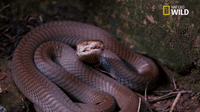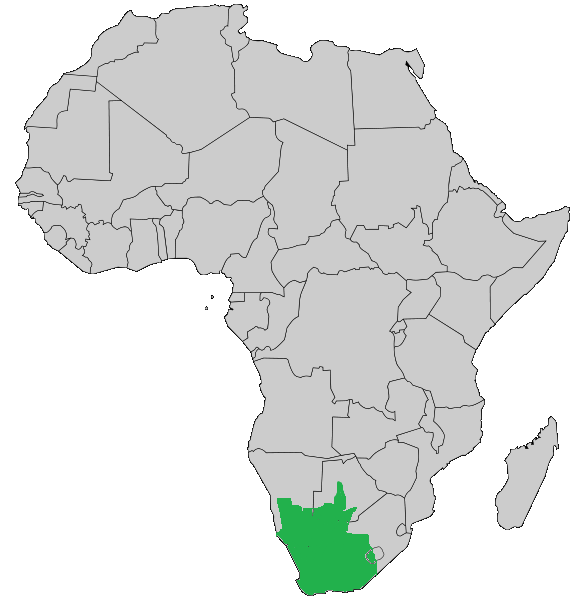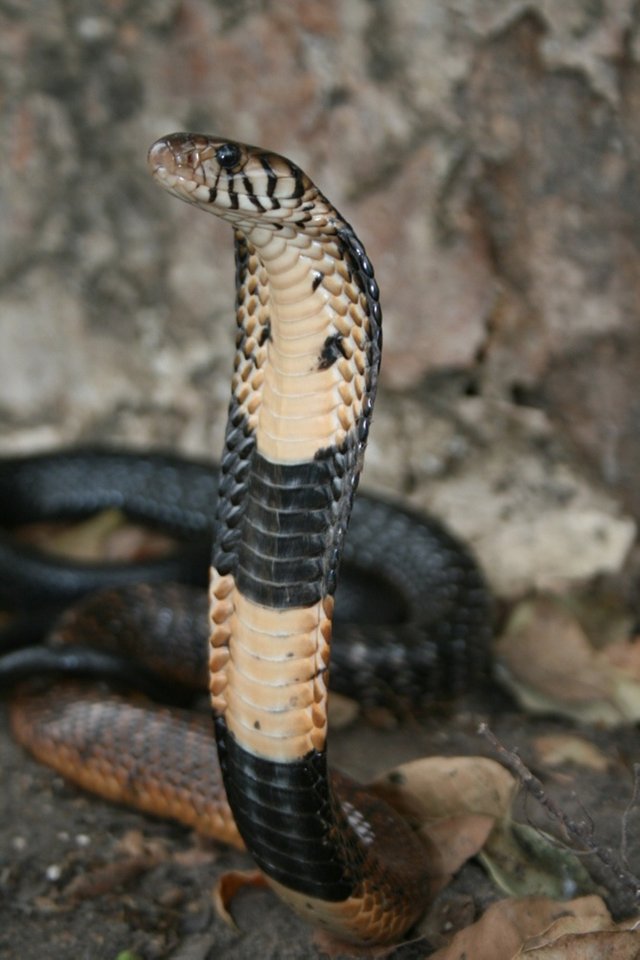Snakes - Fatal Attraction
Fatal Attractions
Introduction
South Africa hosts between 130 and 160 different species of snakes.
Today, I write about the species of snakes, that are most dangerous to humans in this vicinity, as well as touch base about other venomous snakes.
My previous post, Illustrious Snakes, bears reference.
Black Mamba (Dendroaspis polylepis)
The Black Mamba is not only one of the world’s most lethal snakes, it is also the fastest land snake in the world, moving above speeds of 20km/hour!
In Africa, they are the largest venomous snake and can grow up to between 8.2 to 14 ft.
Classification/Taxonomy
• Kingdom: Animalia
• Phylum: Chordata
• Class: Reptilia
• Order: Squamata
• Suborder: Serpentes
• Family: Elapidae
• Genus: Dendroaspis
• Species: D. polylepis
• Diet: Carnivores
• Size: up to 14 ft
• Weight: up to 3.5 lbs
• Average life span (in its natural habitat): up to or more than 11 years
Habitat
They are located in the various provinces of South Africa, and are found on the ground, in grass, bushes and trees.
Characteristics
Black mambas are of a olive to dark brown colour. The colour of the inside of its mouth is black, and that is where they get their name.
It can inject powerful doses of venom which paralyze, with its resonating fangs. If struck and the fangs it a major artery, it would result in fatality within approximately 20 minutes, for a human.
Puff Adder (Bitis arietans)
The Puff Adder is actually responsible for more human fatalities as a result of how well camouflaged they are.
They are very slow moving snakes that do not move away when approached. They expand their bodies and make a hissing sound, as a warning, which gave rise to their name.
Classification/Taxonomy
• Kingdom: Animalia
• Phylum: Chordata
• Class: Reptilia
• Order: Squamata
• Suborder: Serpentes
• Family: Viperidae
• Genus: Bitis
• Species: B. arietans
• Reproduction: Ovoviviparous
• Diet: Carnivores
• Size: up to 3 ft
• Weight: up to 13.2 lbs
• Average life span (in its natural habitat): up to 15 years
Habitat
Puff Adders are the most widespread snake in Africa. They can be found from the Southern Cape in South Africa all the way to the Sahara desert.
They are predominantly surface-dwelling, however they are sometimes found climbing trees and swimming.
Characteristics
They are generally more active at night and can be found basking in the warmth, during the day.
They depend on their camouflage for protection.
Their strike speed is unbelievably fast and they deeply inject their potent venom, which is cytotoxic and haemotoxic, with their long fangs.
They are dense, heavy bodied snakes with a large head that is flat and triangular in shape.
Their colour varies widely from blackish to brown.
They have a row of bands that are chevrons or sometimes U shaped, along their backs.
Cape Cobra (Naja nivea)
The Cape cobra is considered as one of the most dangerous species of cobra within Africa.
When aggravated, this volatile snake is known to makes a hissing sound, spread its hood, and raise its body as a defence mechanism, and at this point will readily strike.
Classification/Taxonomy
• Kingdom: Animalia
• Phylum: Chordata
• Class: Reptilia
• Order: Squamata
• Suborder: Serpentes
• Family: Elapidae
• Genus: Naja
• Subgenus: Uraeus
• Species: N. nivea
• Reproduction: Oviparous
• Diet: Carnivores
• Size: up to 5 ft
• Average life span (in captivity): between 12 - 20 years
Habitat
The Cape Cobra is commonly found in the more dry areas in the country, throughout the Cape Provinces of South Africa, Free state, as well as in pockets of Botswana and Namibia.
They typically live within rodent burrows, as long as it is not disturbed and there is enough food. The presence of rodents and water, attract this snake to human residence.
Characteristics
The colour of the Cape Cobra varies, from an olive to reddish brown, shades of yellow and black.
They are nervous and aggressive snakes, which makes them unpredictable and dangerous, packing potent , neurotoxic venom.
They are diurnal, which means that they do not hibernate, and they are mostly active during the day.
Mozambique spitting cobra (Naja mossambica)
The Mozambique spitting cobra is measured as one of Africa’s, most dangerous snakes.
Its venom is nearly as toxic as the American Mojave (Crotalus scutulatus), rattlesnake which is considered as the world's most venomous rattlesnake.
Classification/Taxonomy
• Kingdom: Animalia
• Phylum: Chordata
• Class: Reptilia
• Order: Squamata
• Suborder: Serpentes
• Family: Elapidae
• Genus: Naja
• Species: N. mossambica
• Reproduction: Oviparous
• Diet: Carnivores
• Size: up to 5 ft (average: 3.5 ft)
• Weight: up to 5 lbs
• Average life span (in its natural habitat): up to 25 years
Habitat
The Mozambique spitting cobra is widely distributed throughout Africa, in almost all parts of Mozambique, eastern parts of Southern Africa, as well as pockets of Botswana, Angola, Zimbabwe, Swaziland, Zambia, Namibia, Tanzania and Malawi.
They are typically found in coastal regions and moist grasslands, close to water.
Characteristics
The matured snakes are predominantly active at night, however the younger ones are more active during the day.
In the Shangaan language, which is spoken in the northeast regions of South Africa, they are often referred to as M'fezi.
This snake is a relatively small and thin snake, with a blunt head and a medium sized eye.
Their colour ranges from a shade of brown to a pinkish colour, with a mix of black bars, blotches and spots on their throat and the forefront of their body.
They can spray their venom which contains postsynaptic, neurotoxin and cytotoxin, between 6 to 10 feet away, with unbelievable accuracy.
Part of their diet includes other snakes, such as the Puff Adder! (refer above)
Boomslang (Dispholidus typus)
The cause of death of a Boomslang’s prey is internal and external bleeding resulting from its deadly strike by use of its large fangs (3 to 5 mm long) which inject potent, haemotoxic venom.
Classification/Taxonomy
• Kingdom: Animalia
• Phylum: Chordata
• Class: Reptilia
• Order: Squamata
• Suborder: Serpentes
• Family: Colubridae
• Genus: Dispholidus
• Species: D. typus
• Reproduction: Oviparous
• Diet: Carnivores
• Size: up to 6 ft
• Weight: up to 1 lbs
• Average life span (in its natural habitat): up to 15 years
Habitat
Boomslangs are found throughout South Africa, with a wide habitat range, which includes coastal areas, grasslands, and undergrowth, primarily found in trees, very rarely seen on the ground.
Characteristics
Boomslangs are one of the few snakes in its species that is dangerous to people.
Fortunately, they are very shy, therefore bites are rare.
They have very distinctive large eyes and an egg-shaped head.
They are extremely variable in colour with males being light green to black with black or blue scale edges, and adult females are brown or green.
Their ability to camouflage is exceptional.
When they feel threatened they tend to inflate their neck.
Other potentially dangerous snakes
The above snakes are the more frequently encountered snakes.
Other poisonous snakes include:
• the Forest Cobra (Naja melanoleuca)
South Africa's biggest cobra, the Forest Cobra, growing between 2 and 3 meters, and can be found in north-east KwaZulu-Natal. It is a slender dark brown to black snake with a slender hood. It is found in forests can thickets near water. It is responsible for very few bites and anti-venom is available.
• the Gaboon Viper (Bitis gabonica)
The Gaboon Viper can be found in the forests of northern KwaZulu-Natal. It is the largest in its species. They are very passive snakes and will rarely attack unless provoked, They have very long fangs, which enables them to inject a large dose of venom.
• the Eastern Green Mamba (Dendroaspis angusticeps)
The Eastern Green Mamba, is found in the coast of KwaZulu-Natal, as well as Eastern Cape. It is green in colour and has the same characteristic coffin shaped head as the Black Mamba, however they are slimmer and shorter, growing up 2 meters long, with smooth scales. Their bite is just as poisonous.
Conclusion
For more on my series on amazing life in the water, on land & astoundingly parading the air, please follow me.
Thank You!
References:
https://en.wikipedia.org/wiki/Black_mamba
https://www.livescience.com/43559-black-mamba.html
https://www.livescience.com/54227-adder-facts.html
https://en.wikipedia.org/wiki/Bitis_arietans
https://en.wikipedia.org/wiki/Cape_cobra
https://snake-facts.weebly.com/cape-cobra.html
https://en.wikipedia.org/wiki/Mozambique_spitting_cobra
https://www.britannica.com/animal/cobra-snake/images-videos
https://snake-facts.weebly.com/mozambique-spitting-cobra.html
https://www.britannica.com/animal/boomslang
https://snake-facts.weebly.com/boomslang.html
https://en.wikipedia.org/wiki/Forest_cobra
https://en.wikipedia.org/wiki/Gaboon_viper
https://en.wikipedia.org/wiki/Eastern_green_mamba
All images are linked to their sources.

























Being A SteemStem Member
Congratulations @smurfette! You have received a personal award!
Click on the badge to view your Board of Honor.
Congratulations @smurfette! You received a personal award!
You can view your badges on your Steem Board and compare to others on the Steem Ranking
Vote for @Steemitboard as a witness to get one more award and increased upvotes!